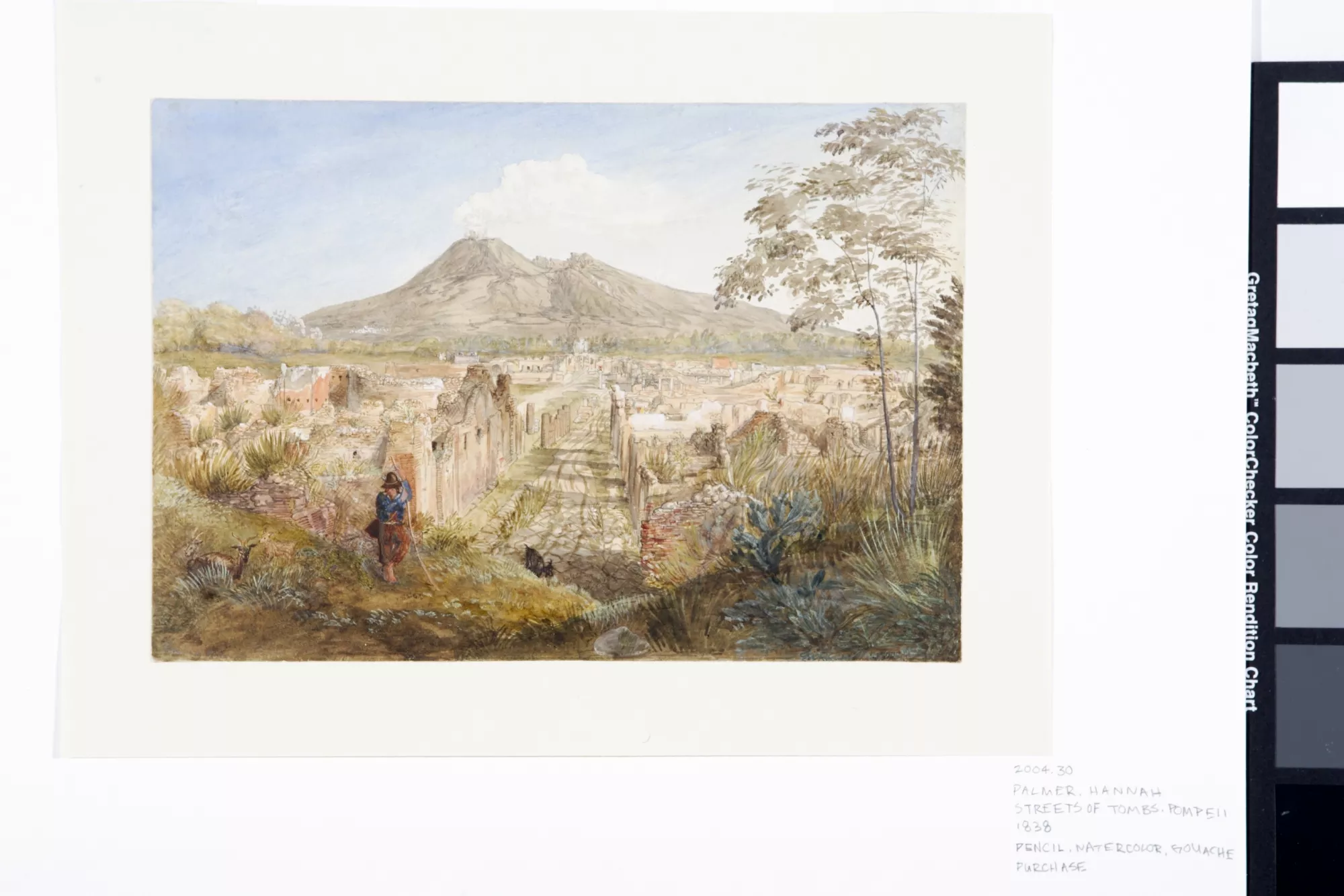Creation Date
1838
Height
18 cm
Width
27 cm
Medium
Genre
Description
During the latter part of their honeymoon in 1837-38, Hannah Palmer and her husband Samuel, also a painter and a follower of William Blake, spent much time sketching at Pompeii. For this view, she chose a recently uncovered portion of the city. According to the archaeologist William Gell, “the greater portion of the Street of Tombs” was cleared in Spring 1813 under the “liberal patronage” of Napoleon’s sister Caroline Murat (v), who was Queen of Naples during the French occupation of 1808-1815. The larger ruin in the left foreground corresponds with the location of the Villa of Cicero, one of the first structures to be explored when Pompeii was rediscovered in 1748. Archaeological exactness was not Palmer’s primary concern, however, and the point of view—apparently from the top of the city’s eastern or Herculaneum Gate—seems improbable. The symbolic resonance of the Street of Tombs is more important, reminding the viewer that the whole city is a monument to the ancient Romans who perished in the eruption of 79 CE. Palmer’s composition foregrounds the sudden drop from the overlying ground to the depths of the formerly buried city, at the same time juxtaposing the fertile countryside with the destruction lurking beneath, as many similar pictures had done. Scores of paintings of Vesuvius were sold each year to tourists, whose general relationship to Pompeii in the early nineteenth century is ably illustrated by Chloe Chard in “Picnic at Pompeii.” The Palmers, belonging to an established subspecies of artistic tourists, hoped to sell some of their own paintings. Unlike their predecessors in the 1770s and 80s (such as Joseph Wright of Derby and Elisabeth Vigée-Lebrun), the Palmers did not see a major eruption. Vesuvius had been quiet for four years, and Palmer’s painting is tranquil and orderly; the Street of Tomb runs vertically through the center of the picture plane, balanced by the horizontally spreading, light-filled ruins and cradled between the pastoral foreground and sleeping mountain. [NH]
Copyright
Copyright 2009, Chazen Museum of Art, University of Wisconsin-Madison

